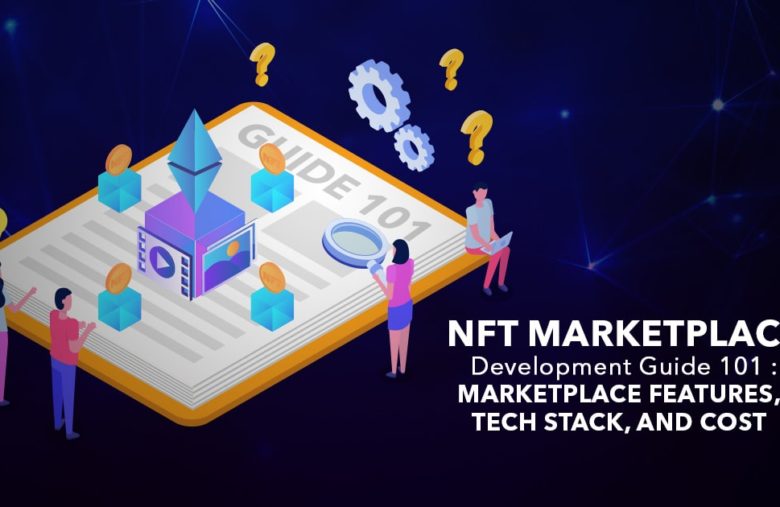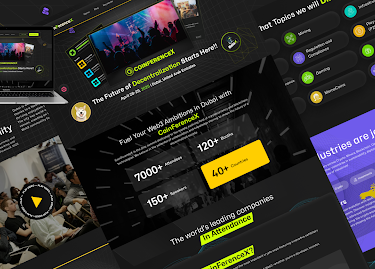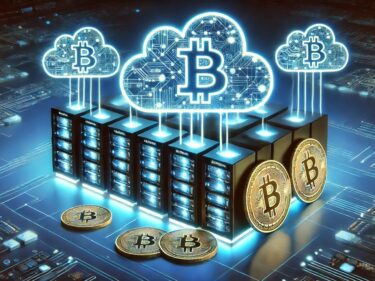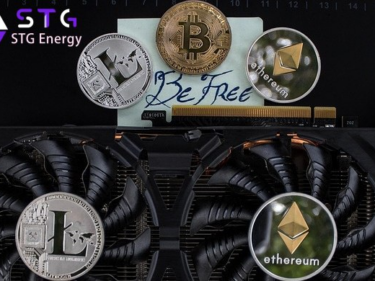NFT Marketplace Development Guide 101: Features, Tech Stack, and Cost

“Creators pocketing revenue and investors believing in exclusiveness”, is the right way to describe the booming industry of crypto collectibles. With a daily trading volume of $4.94 billion according to CoinMarketCap, these digital assets are breaking all records with every passing day.
Note the significance: NFT Marketplace
Undoubtedly, blockchain technology is the backbone of NFT trading platforms. Artists, speculators, and traders get several advantages like immutability, traceability, and transparency. Currently, Binance Smart Chain (BSC), Cardano, Ethereum, Flow, Tezos, TRON, Waves, and WAX are being used to develop an NFT marketplace website.
Auctions and bids can be organized 24x7x365. Content developers get the liberty to set a price for their work while investors can make attractive offers to grab the rare collectible.
Likewise, entrepreneurs can be part of this phenomenon by beginning NFT marketplace development.
Unraveling the tech stack for developing NFT Marketplace
Cloud Storage systems
Filecoin and InterPlanetary File Systems (IPFS) act as decentralized storage platforms. Artists can back up their data safely. They will benefit from censorship resistance, protection against tampering of personal information, and the absence of intermediaries.
Moreover, content creators can upload their files in networks that are maintained off-chain. Interestingly, all the peer-to-peer (P2P) payments are timestamped. There is no possibility of hacking and phishing since the details are not maintained on-chain.
Frameworks for deploying automated software
Smart contracts on the Ethereum and TRON blockchain networks operate on the Ethereum Virtual Machine (EVM) and the TRON Virtual Machine (TVM) respectively. An NFT development company uses various frameworks like Drizzle and Truffle.
Pre-programmed solutions work on certain terms and conditions (T&C). Techpreneurs get the upper hand with benefits like accuracy, a decrease in operating costs, and the elimination of paperwork.
There are no middlemen since the whole process is digitized. In the long run, this prevents cross-verification of all the data.
Open-source libraries
An assortment of JavaScript tools are used for designing the front-end of the NFT trading platform. Application Programming Interfaces (APIs) and Decentralized Applications (DApps) are established using Express.js and Node.js. These web application frameworks ensure robust maintenance of the operational server.
Importantly, React.js helps in building a friendly user interface. This leads to a smooth trading experience for both buyers and sellers. Dynamic web applications can be created in a quick time and the operating performance is enhanced significantly.
Programming languages
A plethora of coding languages are used for setting up the NFT marketplace. It comprises JavaScript, Python, Kotlin, Solidity, Swift, Vyper, and TypeScript. The programming languages vary depending on the blockchain network and the kind of smart contracts.
With an NFT development company like Appdupe, you can figure out the right technology stack for your NFT platform and can launch it soon.
The noteworthy features of an NFT marketplace
A modern search panel
Discovering the right collectible is effortless for users. They can tap the search dashboard and find different kinds of collections uploaded by artists. Moreover, NFT enthusiasts can check out the background of creators before making a bid.
Group-wise asset segregation
All the crypto-collectibles minted and listed by an NFT trading platform are split into different categories. For example, artists can place their virtual assets under sections like artwork, domain names, memes, metaverses, music, photography, trading cards, sports goods, virtual worlds, trading cards, etc.,
Profile panel
Registered content creators get access to a personal profile. They can view the number of bids made by prospective investors, burns of collectibles, listings, primary and secondary sales. Artists can upload their Non-Fungible Tokens (NFTs) in different file formats.
Sharing of real-time updates
With the NFT space-changing rapidly, circulation of live updates is needed. Content creators and investors will receive instant information about new bids, latest releases, trending collections, and other privacy and security updates. Accordingly, they can check the market trends and purchase their desired collectibles.
Timed Auctions
“Time waits for no one,” says a popular quote. Artists can choose either the Dutch or English style as per their business objectives and comfort.
Importantly, a blockchain-powered platform can conduct declining and fixed price auctions respectively. The price of collectibles will decrease strategically until investors opt to purchase them in a Dutch auction.
Further, the highest bid made by a specific trader will win in the case of an English auction. Content developers can also cancel an auction anytime. Entrepreneurs can pocket a gas fee from artists and increase their revenue.
Rankings section
A NFT marketplace will line up numerous collections in a list. It contains details like the changes in the average prices, the name of the collectibles, the total number of assets and owners, and trading volume.
Besides that, filters are available to know the data (daily, weekly, monthly, and all-time). Moreover, the sales are split based on the type of blockchain network and sidechain. Therefore, this ensures trust as information is in the public domain round the clock.
Seamless sync with digital wallets
Software wallets embedded with passwords or private keys help in storing NFTs safely. Generally, trading platforms offer a variety of hot wallets for both artists and traders. They can use Coinbase Wallet, Dapper, Fortmatic, MetaMask Wallet, MyEtherWallet (MEW), Portis, Torus, Trust Wallet, WalletLink, etc.,
Set a Collection button
Artists can create ERC-721 and ERC-1155 digital collectibles as part of their exclusive collection. Moreover, content creators can attach a feature image, short description, properties like colour and size, and a title. They can pick formats like JPEG, GIF, MP3, MP4, PNG, and WEBP.
Various selling methods
There are 3 kinds of selling methods (Highest Bid, Set Price, and Bundle). Content developers can fix two prices (starting and ending price). The cost of crypto-collectibles can also be set in an average manner.
Further, an expiration date can be set by artists. The listing will get cancelled automatically after the end of the sale.
Around-the-clock technical support
Unlike traditional asset trading platforms, NFTs can be bought and sold 24×7 by artists and traders. Digipreneurs ought to offer prompt support services to users.
They can hire a skilled team and sort out issues related to minting and listing of collectibles, copyright infringement, duplication, intellectual property violation, privacy, processing of peer-to-peer (P2P), payments, and security.
Insight yourself on the cost of NFT marketplace development
The cost of creating a platform for buying and selling crypto collectibles depends on numerous factors. It relies on various aspects like the kind of blockchain network, level of customization needed by entrepreneurs, the time allocated for creating the front-end and back-end, the type of frameworks and technologies used, and the wages paid to the team of blockchain, crypto, and NFT developers.
Moreover, post-deployment services are an important part of creating an NFT marketplace. It comprises solutions like the addition of online payment gateways, API integration, layer 2 development, organizing marketing campaigns across communication channels, security updates, smart contract auditing, sync with hardware and software wallets, and technical assistance.
Wrapping Up
Above all, the trading volume of crypto-collectibles in the last 7 and 30 days respectively is $230.68 million and $2.46 billion as per the NonFungible data tracker. Digital collectibles are steadily making an entry into the mainstream economy.
As a result, artists across the world are pocketing humongous revenue. Techpreneurs ought to focus on scalability while expanding their business operations. To ensure non-stop functioning of their NFT marketplace, they can use options like fundraising, multi-chain compatibility, partnerships with famous brands and celebrities.
Entrepreneurs with a transformative mindset can develop the NFT platform with a white-label NFT marketplace solution now and go forward in the industry soon.
Author Bio
Jennifer Atkinson is a content writer at Appdupe. Having worked with tech experts, she has gotten lucky to author in-depth guides that teach entrepreneurs, ways to build, grow and scale their business in the NFT and Crypto industry. Learning new tech news and jotting them down to a plan for people is her favourite pastime.




1 Comment